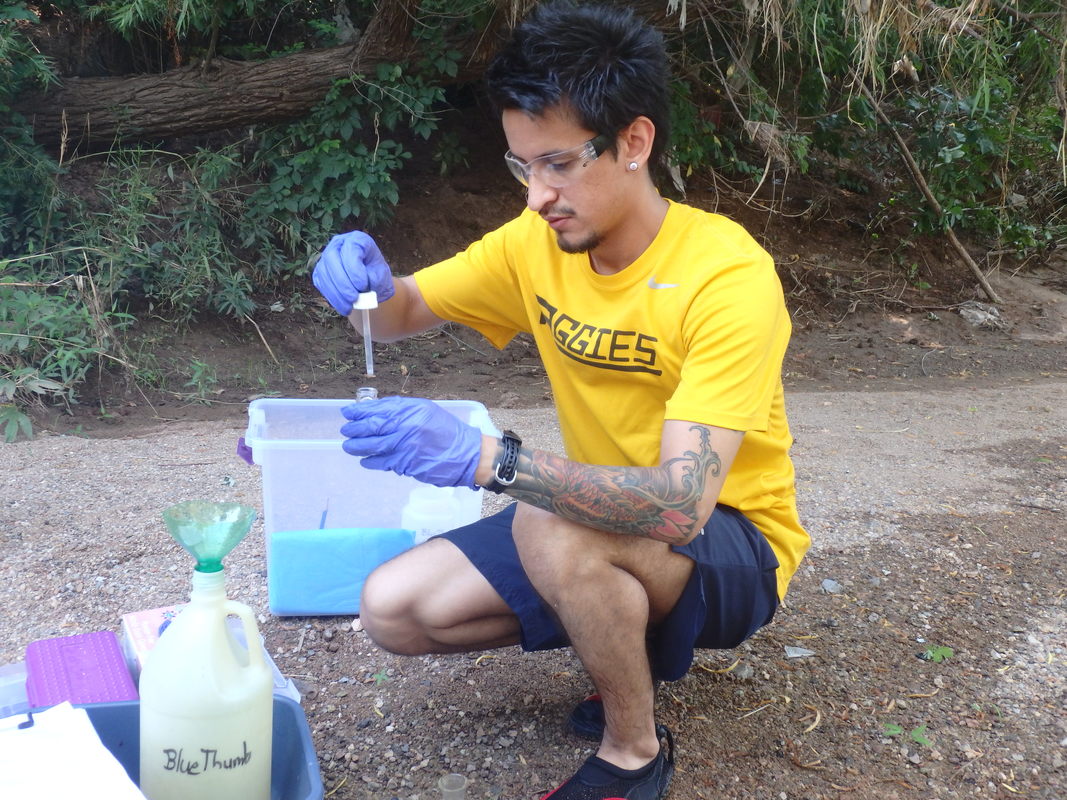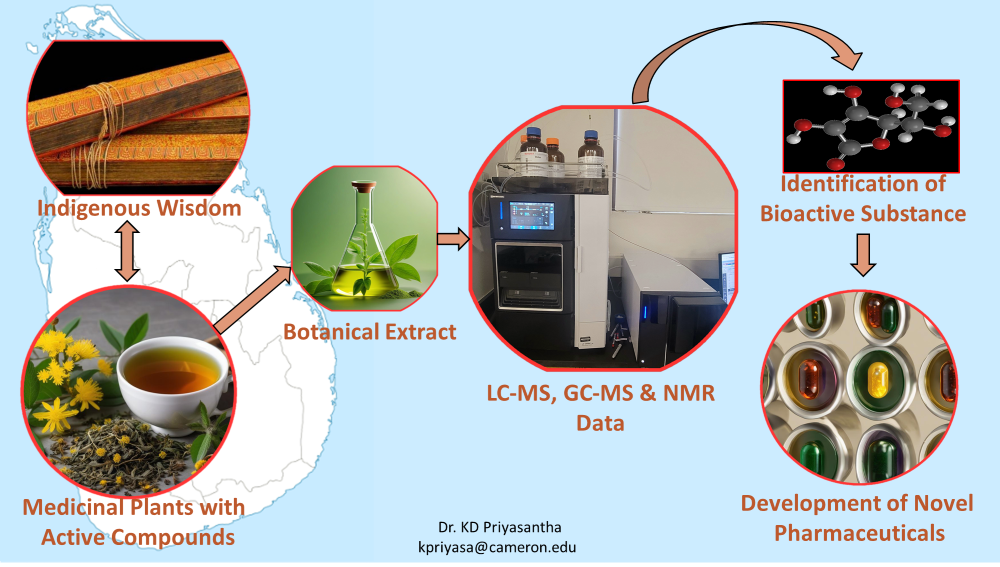Analytical Chemistry
Analytical Chemistry is the science of obtaining, processing, and communicating information about the composition and structure of matter. In other words, Analytical Chemistry is the art and science of determining the composition in terms of what and how much is present. Here at Cameron University, we offer four research endeavors of Analytical Chemistry. One area is through water analysis in which the students will observe the quality of water through the measurements of water solute levels and how the dissolved materials effect the environment stationed around the water source. Another area of interest is the study of molecular structures found in crystals, or crystallography. The students will study the compounds through measuring the X-ray diffraction patterns of the crystals of interest. In a third area of the study of Analytical Chemistry, environment safety through the monitoring of pollutant presence and concentration in environmental settings. Here students will study the presence, behavior, and potential impact of pollutants on ecosystems and human health through instruments such as gas chromatography, liquid chromatography, and atomic absorption spectrometry. One more aspect to the research field that Cameron offers is the analyzing of the chemical composition of plants with medicinal significance. Students will analyze the chemical composition of the plants and investigate to see if these composition will benefit the medical field.


